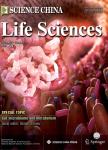Transcriptional silencing and developmental reactivation of cry1Ab gene in transgenic rice
Transcriptional silencing and developmental reactivation of cry1Ab gene in transgenic rice作者机构:Institute of Nuclear-Agricultural Sciences Zhejiang University Hangzhou 310029 China Department of Plant Protection Zhejiang University Hangzhou 310029 China Department of Biochemistry University of Ottawa K1N 6N5 Canada Peking-Yale Joint Center for Plant Molecular Genetics and Agrobiotechnology National Laboratory of Protein Engineering and Plant Genetic Engineering College of Life Sciences Peking University Beijing 100871 China
出 版 物:《Science China(Life Sciences)》 (中国科学(生命科学英文版))
年 卷 期:2002年第45卷第1期
页 面:68-78页
学科分类:0710[理学-生物学] 071001[理学-植物学] 07[理学]
基 金:This work was supported by the Rockefeller Foundation and the Yok Ying Tung Education Foundation
主 题:transgenic rice, cry1Ab gene, silencing, reactivation.
摘 要:One transgenic rice line lacking Cry1Ab expression product was screened in the progenies of Agrobacterium-transformed transgenic rice variety Zhong 8215 with a cry1Ab gene under field releasing conditions by using GUS histochemical assay and Western blot. Molecular hybridization results revealed that the cry1Ab gene was silenced in the transgenic rice variety Zhong 8215 and two copies of ubiquitin promoter were integrated into the rice genome. The silencing of cry1Ab gene in transgenic rice was found to be due to the methylation of the ubiquitin promoter as revealed by methylation analysis. Meanwhile, different concentrations of demethylation reagent 5-azacytidine combining with different treatment time were employed to treat the silenced transgenic rice seeds. The results indicated that 5-azacytidine could reactivate 8%-30% of the silenced transgenic rice plants and the expression level of the reactivated cry1Ab transgene could reach as high as 0.147% of the total soluble protein. Treatment with low concentration of 5-azacytidine(45 mg/L for 1 d and 2 d) could lead to the highest reactivation ratio and the highest expression level of the cry1Ab gene.



